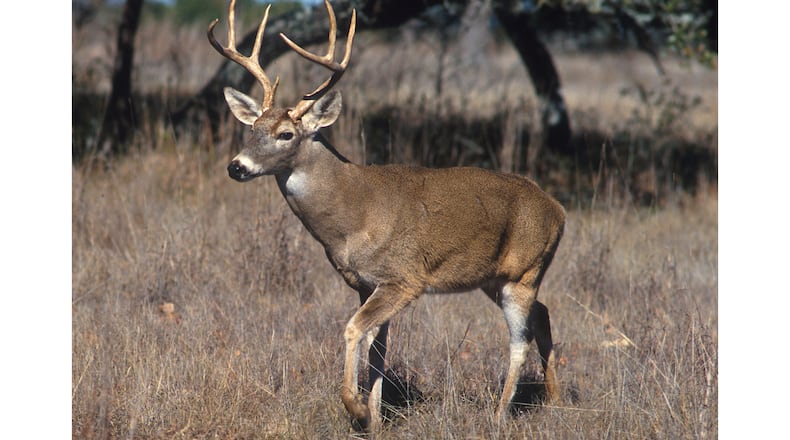This time of year, the antlers of Georgia’s white-tailed male deer, or bucks, are growing super fast. It’s why July’s full moon, which will light up the sky on Monday evening before Independence Day, is called the Buck Moon.
Male deer grow antlers to attract females: A large set of antlers is proof of the male’s health to potential mates. Bucks also use their antlers to fight other males for supremacy.
Bucks, however, completely shed their antlers in late winter and early spring — and then grow new ones. As the animals themselves grow older, they produce larger and more impressive antlers that spike and branch.
The speed at which antlers develop puts the structures among the fastest-growing body appendages in the animal kingdom. Antlers rise out of permanent nubs, or pedicles, on the top of a buck’s skull. At first, they grow slowly, but by late May, they are developing at a remarkable speed. By July, the antlers are almost fully grown.
While growing, antlers are made up of sensitive tissue covered in a velvety skin. In late summer and early fall, at the commencement of the deer’s breeding season, rising testosterone levels harden the antlers into solid bonelike tissue. The “velvet” then falls off or is rubbed off when the buck scrapes small trees.
In late winter, when breeding season is over, plummeting testosterone levels cause the disintegration of a tissue layer that connects antlers to the skull. The antlers then drop off. Within weeks of losing their antlers, bucks begin growing new ones.
This raises a puzzling question: Why do bucks shed their antlers in the first place — unlike cows, goats and sheep, which permanently retain their horns? The regrowth of antlers requires enormous amounts of energy, but no one fully knows why the deer do it.
One of several theories suggest it is an energy-saving measure, so that the bucks are not burdened with extra baggage during lean winters when food is scarce.
Whatever the reason, it’s something to ponder as the Buck Moon rises on Monday evening.
IN THE SKY: From David Dundee, Tellus Science Museum astronomer: Venus is low in the west at dusk. Mars is in the southwest at dark, near the bright planet Venus. Jupiter rises out of the east just before midnight; Saturn rises out of the east at about midnight.
Charles Seabrook can be reached at charles.seabrook@yahoo.com.
About the Author
Keep Reading
The Latest
Featured

